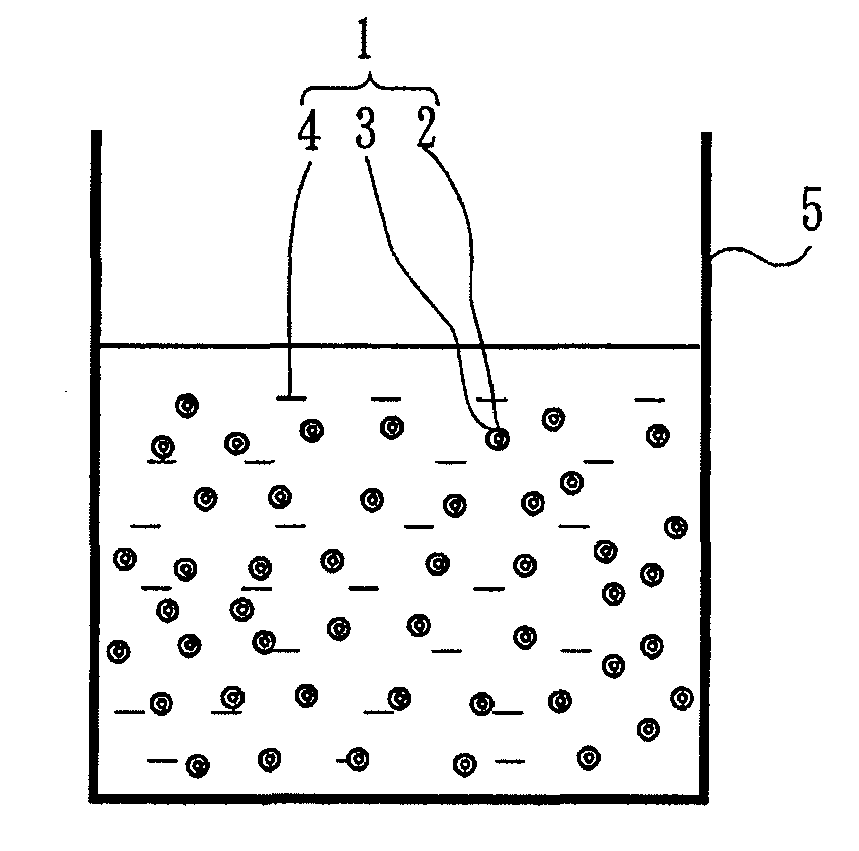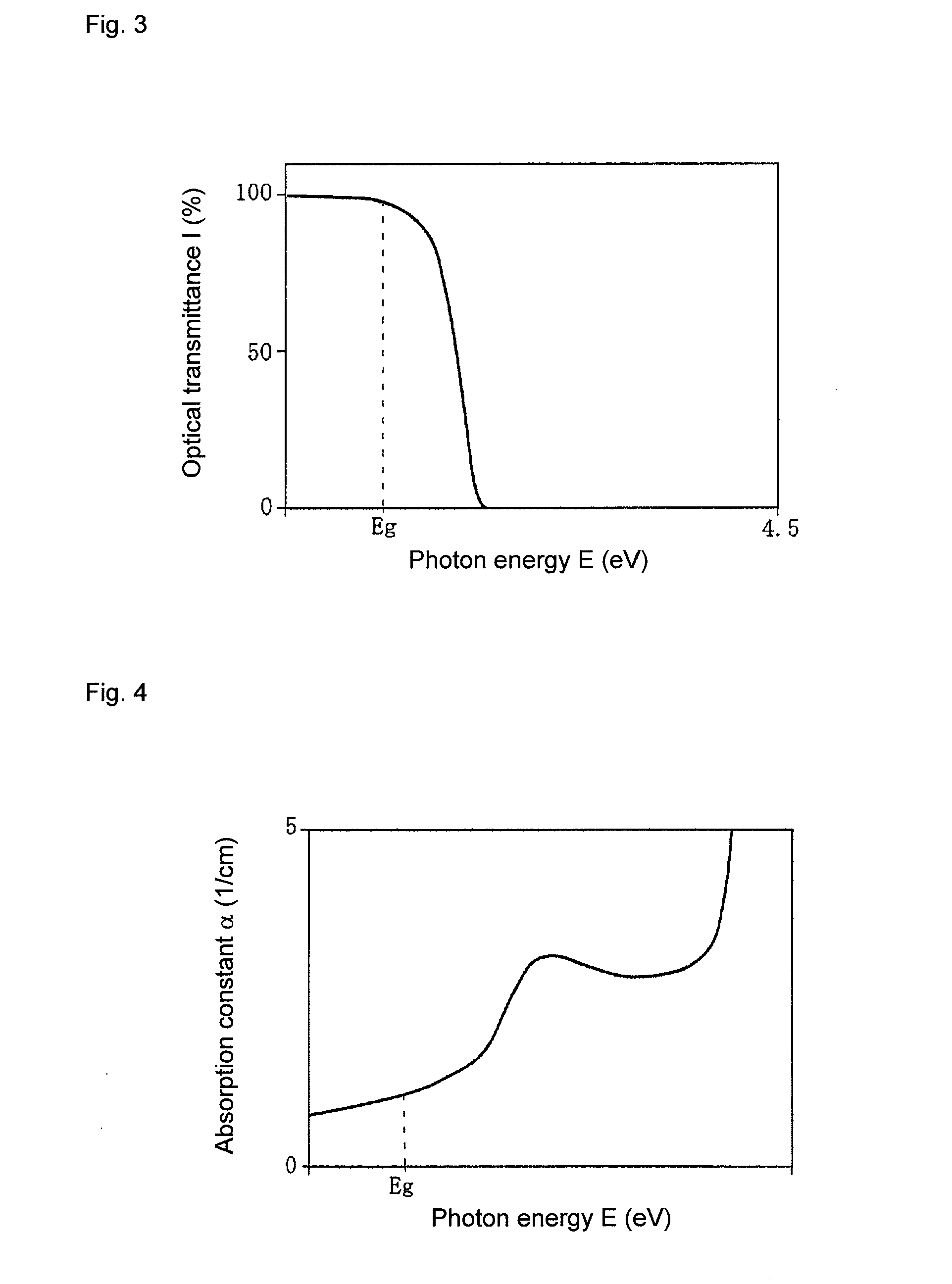Ultrafine zinc oxide particle dispersion solution, method for producing the ultrafine zinc oxide particle dispersion solution, and zinc oxide thin film
- Summary
- Abstract
- Description
- Claims
- Application Information
AI Technical Summary
Benefits of technology
Problems solved by technology
Method used
Image
Examples
example 1
[0165]Dispersion were produced by using primary surfactants differing in the side chain hydrophilic group length n and material characteristics were evaluated.
Production of Samples
[0166]Cyclohexane was used as a hydrophobic solvent, 1-octanol was used as a secondary surfactant, and water was further used.
[0167]Four NPE(n)s having side chain hydrophilic group lengths n of 2, 4, 10 and 15, respectively, were prepared as primary surfactants.
[0168]Then, the cyclohexane, NPE(n), 1-octanol and water were mixed and stirred so as to achieve a ratio of 30:1.4:1.7:0.03, thereby producing a W / O type microemulsion.
[0169]Next, diethoxy Zn was used as a Zn alkoxide, monoethanolamine was used as an aminoalcohol, ethanol was used, and these were mixed and stirred to prepare a diethoxy Zn solution (Zn alkoxide solution) was prepared.
[0170]Specifically, the same molar amount of monoethanolamine as the molar amount of the diethoxy Zn added to the ethanolic solution was added first to the ethanolic sol...
example 2
[0195]A ZnO thin film was produced by using the ZnO dispersion of Sample No. 3 of [Example 1], and material characteristics were evaluated.
Production of Samples
[0196]The dispersion solution was applied to a quartz substrate by a spin coating method, followed by heat treatment in the air at 250° C., 300° C., 350° C., 500° C. and 700° C. for a prescribed time period. Thus, samples of Sample Nos. 11 to 15 were produced.
Measurement of Transmission Spectrum
[0197]The transmission spectra of Sample Nos. 11 to 15 were measured by using the same absorptiometer as that used in Example 1.
[0198]The measurement results are shown in FIG. 18. The ordinate indicates the optical transmittance I (%), the lower abscissa indicates the photon energy E (eV), and the upper abscissa indicates the wavelength λ (nm). In the diagram, the solid line indicates Sample No. 11, the longer broken line indicates Sample No. 12, the long dashed short dashed line indicates Sample No. 13, the long dashed double-short da...
PUM
| Property | Measurement | Unit |
|---|---|---|
| Angle | aaaaa | aaaaa |
| Particle size | aaaaa | aaaaa |
| Particle size | aaaaa | aaaaa |
Abstract
Description
Claims
Application Information
 Login to View More
Login to View More - R&D
- Intellectual Property
- Life Sciences
- Materials
- Tech Scout
- Unparalleled Data Quality
- Higher Quality Content
- 60% Fewer Hallucinations
Browse by: Latest US Patents, China's latest patents, Technical Efficacy Thesaurus, Application Domain, Technology Topic, Popular Technical Reports.
© 2025 PatSnap. All rights reserved.Legal|Privacy policy|Modern Slavery Act Transparency Statement|Sitemap|About US| Contact US: help@patsnap.com



